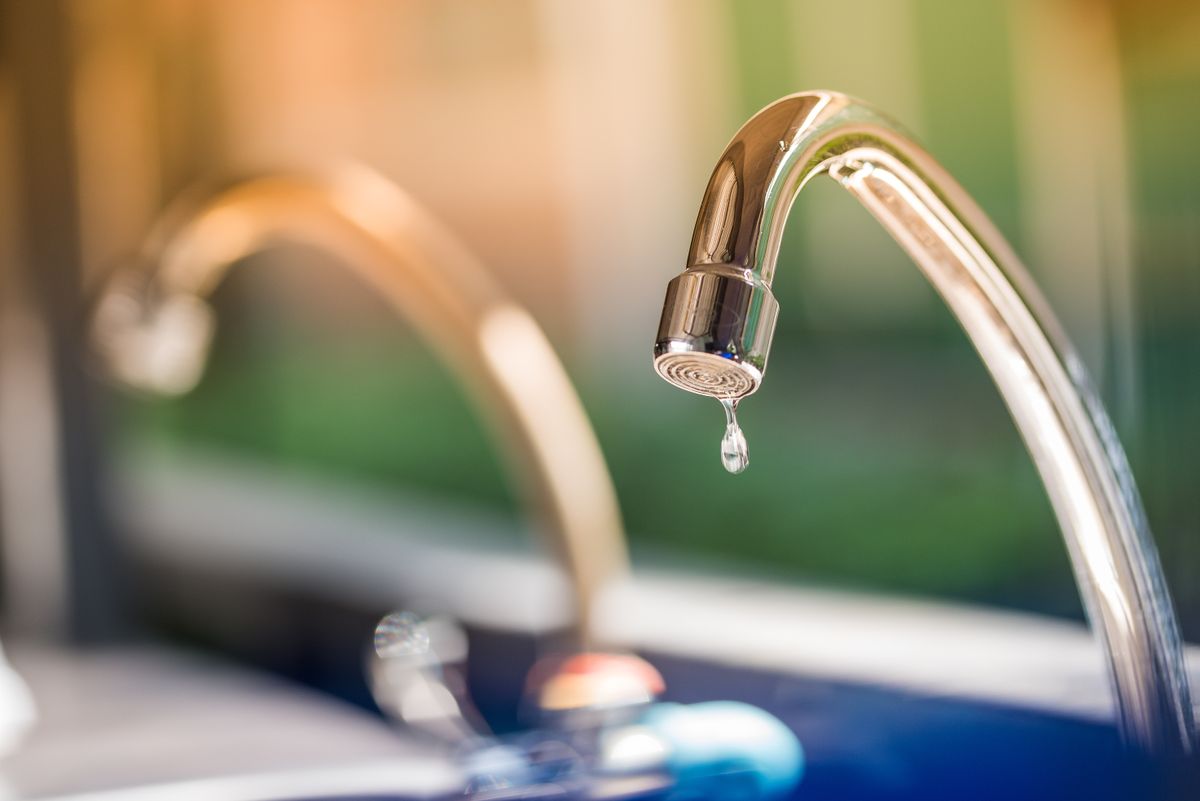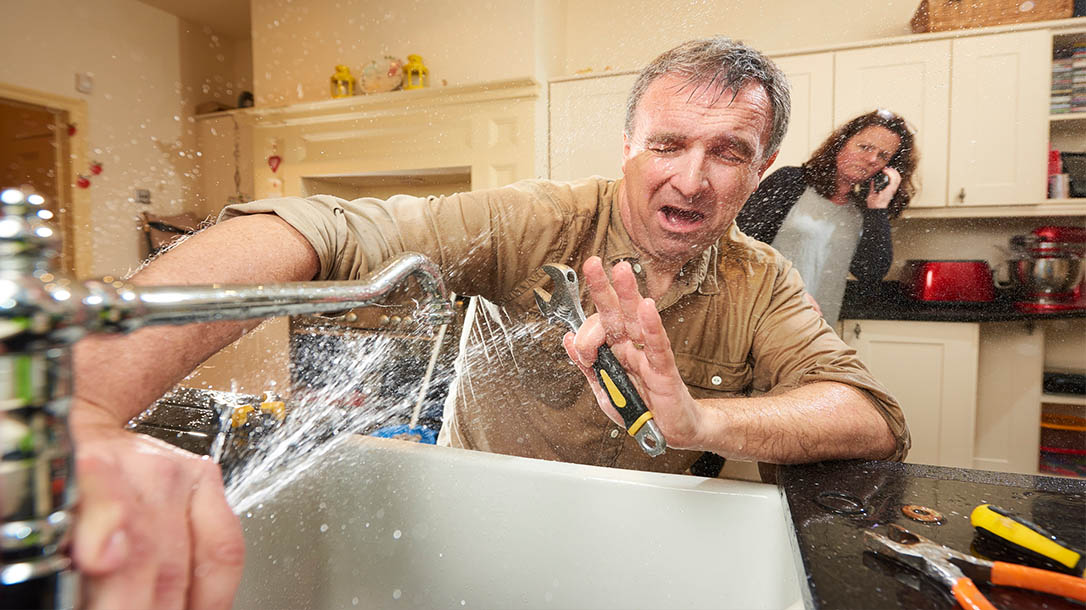Understanding the Relevance of Addressing a Broken Faucet
Understanding the Relevance of Addressing a Broken Faucet
Blog Article
What are your thoughts and feelings on Should I Repair or Replace a Leaky Faucet??

Trickling taps might seem like a small hassle, but their impact goes beyond just the nuisance of the sound. From wasting water to incurring unneeded economic costs and wellness threats, overlooking a trickling tap can lead to various consequences. In this short article, we'll explore why it's important to address this common home concern without delay and properly.
Wastefulness of Water
Ecological Effect
Dripping taps add substantially to water waste. According to the Environmental Protection Agency (EPA), a single tap leaking at one drip per second can squander more than 3,000 gallons of water each year. This not just strains water sources but likewise impacts ecosystems and wild animals dependent on them.
Financial Costs
Increased Water Bills
Past the environmental impact, leaking taps can inflate water bills considerably. The gathered wastage gradually equates right into greater energy expenditures, which might have been stayed clear of with prompt repairs.
Potential Residential Property Damages
In addition, long term leaking can result in damage to fixtures and surface areas surrounding the faucet. Water build-up can trigger discoloration, deterioration, and even structural concerns if left unattended, resulting in additional repair work costs.
Health Concerns
Mold And Mildew and Mold Development
The continuous visibility of dampness from a leaking faucet develops an excellent atmosphere for mold and mold development. These fungi not just jeopardize indoor air top quality but additionally present health and wellness risks, specifically for individuals with respiratory system problems or allergies.
Waterborne Illness
Stagnant water in leaking taps can end up being a breeding ground for germs and various other pathogens, boosting the threat of waterborne diseases. Pollutants such as Legionella microorganisms thrive in stationary water, possibly leading to major ailments when ingested or inhaled.
DIY vs. Specialist Repair
Benefits and drawbacks of DIY Repair
While some may try to repair a dripping tap themselves, DIY repair work include their own collection of challenges. Without appropriate knowledge and tools, do it yourself attempts can intensify the concern or bring about incomplete repair services, extending the problem.
Benefits of Employing a Specialist Plumber
Employing an expert plumber ensures that the underlying root cause of the dripping tap is addressed properly. Plumbing professionals possess the expertise and equipment to identify and repair faucet issues effectively, conserving time and lessening the danger of further damage.
Step-by-Step Overview to Repairing a Dripping Tap
Tools Called for
Before attempting to deal with a leaking tap, collect the required tools, consisting of a flexible wrench, screwdrivers, substitute parts (such as washers or cartridges), and plumber's tape.
Typical Tap Issues and Their Solutions
Determine the type of tap and the certain problem triggering the drip. Usual issues consist of damaged washing machines, corroded valve seats, or damaged O-rings. Refer to manufacturer directions or on-line tutorials for step-by-step assistance on repair services.
Safety nets
Routine Maintenance Tips
To stop dripping faucets, do routine upkeep such as cleansing aerators, evaluating for leakages, and changing damaged components quickly. In addition, take into consideration installing water-saving tools or upgrading to extra effective fixtures.
Value of Prompt Services
Addressing trickling taps as quickly as they're seen avoids further water wastage and possible damages, eventually conserving both water and money in the future.
Effect On Building Value
Assumption of Well-Maintained Building
Preserving a building in good condition, consisting of dealing with upkeep problems like trickling faucets, boosts its regarded value and desirability amongst possible customers or occupants.
Impact on Resale Worth
Properties with properly maintained plumbing components, consisting of faucets, command greater resale values in the real estate market. Resolving leaking taps can contribute to a favorable impression during residential property examinations and settlements.
Environmental Duty
Specific Contribution to Preservation
Taking duty for dealing with trickling faucets aligns with more comprehensive efforts towards water preservation and environmental sustainability. Every individual's activities jointly make a substantial impact on maintaining priceless resources.
Lasting Living Practices
By prioritizing prompt fixings and taking on water-saving routines, individuals add to lasting living practices that profit both existing and future generations.
Verdict
Resolving a trickling faucet surpasses simple convenience; it's a necessary step toward saving water, lowering economic prices, and guarding wellness and residential property. Whether through do it yourself repair work or specialist assistance, doing something about it to deal with trickling taps is a little yet impactful means to advertise responsible stewardship of sources and contribute to a much healthier, much more lasting future.
How to Fix a Dripping or Leaky Faucet
A leaking faucet is one of the most common problems that homeowners encounter, but it being commonplace doesn’t make it any less annoying. The constant drip drip drip of a leaking bathtub faucet, showerhead, or sink tap can disturb your home’s serenity. Left neglected, a dripping faucet can also result in higher water bills and discoloration or mold growth in your sink or plumbing fixtures.
Fortunately, you don’t have to be a trained plumber to know how to stop a dripping faucet. With some basic tools, replacement parts, and a little patience, leaky faucet repair is a breeze. In this article, we’ll explain what causes dripping faucets and how you can fix them.
What Causes a Leaking Faucet?
Kitchen and bathroom faucets come in all manner of designs, but most involve some combination of valves, O-rings, seals, and washers. The O-ring is usually the weakest link, but any one of these pieces can wear down over time. Heat, moisture, temperature fluctuations, minerals, mold, and movement can contribute to warping and corrosion, breaking the watertight seal. This just comes with the territory of being a homeowner. Everything is always subject to wear and tear, and some component parts of your appliances and fixtures need to be replaced on occasion. At least replacement O-rings are cheap!
More rarely, dripping faucets can be a symptom of excessively high water pressure. Were this the case in your home, you would probably notice that the leak is not isolated to one faucet. Water pressure issues are harder to resolve on your own. We recommend contacting a professional plumber if you suspect your water pressure is too high.
How to Fix a Dripping Faucet
Pipe wrench or monkey wrench Allen wrench set Screwdrivers Old towel or rag Shut off the water.
Before you do anything, you need to turn off the water to keep from drenching your kitchen or bathroom. You should find a valve under the sink and against the wall. Once you’ve turned this valve, try turning the faucet on to confirm that the water source has been cut off.
If you can’t locate your local valve for the faucet you’re working on, you can always shut off the water to the house at the main valve. Of course, this will prohibit anyone from using the sinks, showers, or toilets while you’re working on the faucet that’s giving you trouble.
Plug or block the drain.
You’ll be disassembling the faucet and removing some small bits of hardware. Plug the drain with a stopper or rag to avoid the possibility of a small screw falling into your P-trap.
Take apart the faucet assembly.
There are several varieties of kitchen and bathroom faucets, each with its own manner of assembly. For detailed instructions on how to disassemble your faucet, you can refer to the fixture’s manual or contact the manufacturer. If you know whether you have a ball, disc, cartridge, or compression faucet, you can find detailed schematics online.
In general, you need to begin by removing the faucet handles. You might notice a small screw that you’ll need to remove with a screwdriver or Allen wrench. If you don’t see any visible securing hardware, it’s likely hidden under a decorative cap that can be unscrewed or popped off with flathead screwdriver.
Remove each piece methodically, consulting a schematic when necessary. Take notes or arrange the pieces in such a way to make it easier to correctly reassemble the faucet later.
Remove the cartridge.
Once you’ve removed the handles and securing hardware, you should be able to remove the valve cartridge or stem. Some cartridges will slide right out. Other faucet models will require you to loosen a nut with a pipe wrench before you can remove the valve stem.
Examine the exposed hardware.
With the cartridge or stem removed, inspect the component parts. Check the rubber O-rings for wear and tear. Also examine the seat washer for corrosion or other damage. These pieces are usually the responsible parties for a dripping faucet, but it’s worth inspecting the other component parts while you have the faucet disassembled.
Find replacement parts.
Once you’ve identified which faucet component has failed, find an identical replacement. Your local hardware store should have O-rings, seat washers, and other standard components in stock. If you have a luxury or uncommon faucet, you may have to contact the manufacturer for a replacement part.
It’s a good idea to take your old parts with you to the hardware store so you can compare them with the store’s inventory and be sure you’re purchasing the correct replacement.
Reassemble the faucet.
With your new parts in hand, reconstruct the faucet and handles. Don’t be tempted to overtighten screws or nuts. You might think this could create a better seal, but it can instead damage or bend a delicate part of the assembly and create a new problem for you.
Turn on the water and test the faucet.
The only thing left to do is test your work. Unplug the sink, turn the water back on, and try the faucet. Congratulate yourself on a job well done!
https://www.libertyhomeguard.com/how-to-fix-a-dripping-or-leaky-faucet/

Hopefully you enjoyed reading our piece about . Thanks so much for taking a few minutes to browse our blog. Liked our blog posting? Please share it. Let other people discover it. I love your readership.
Report this page